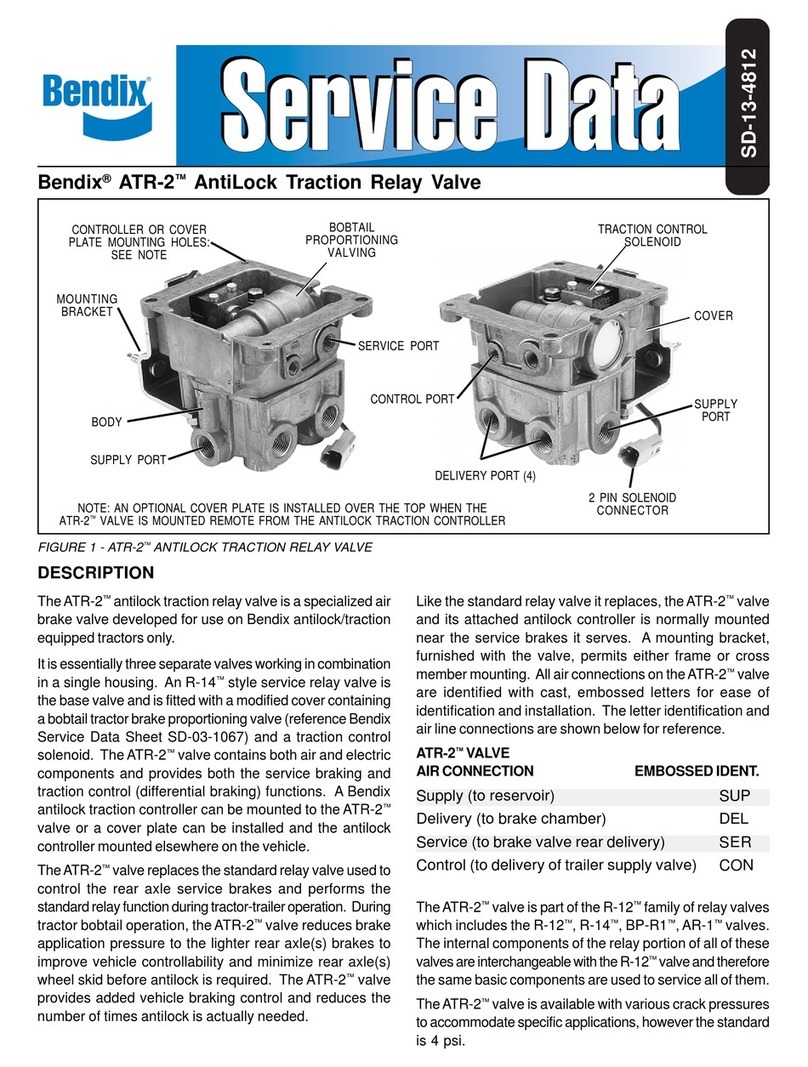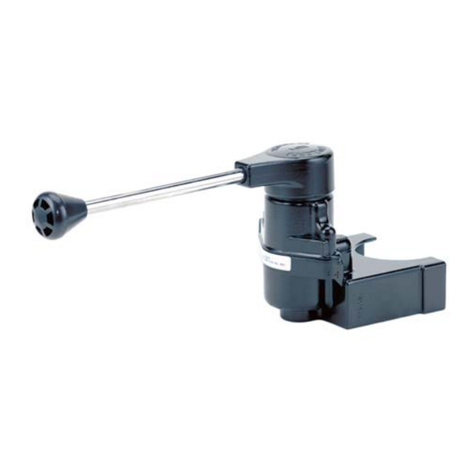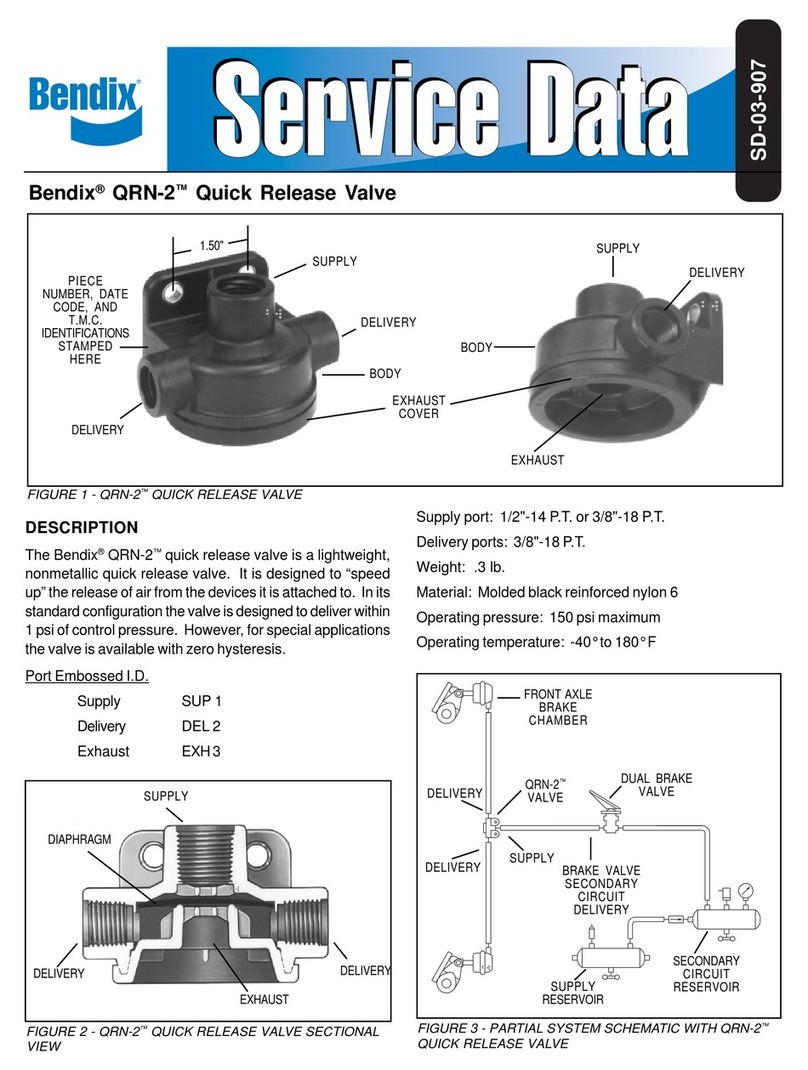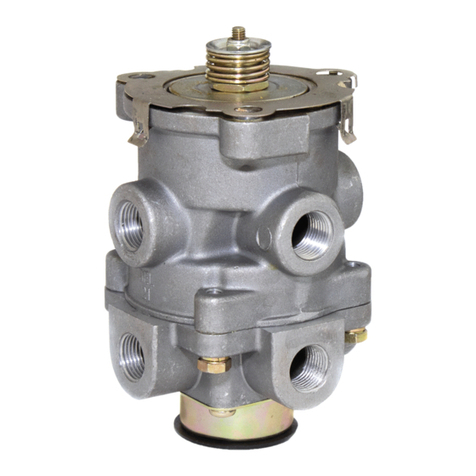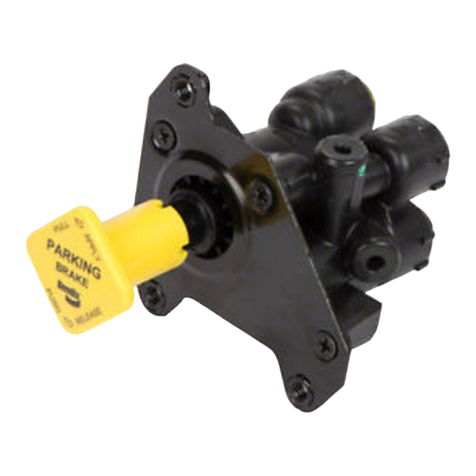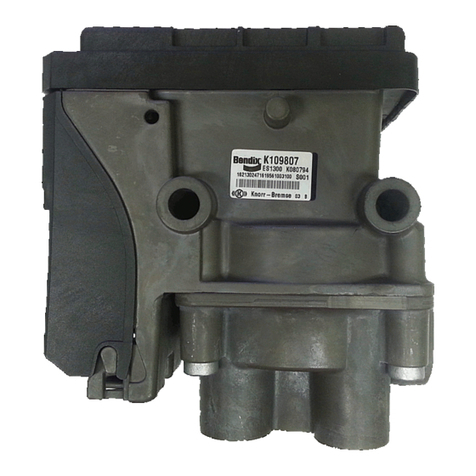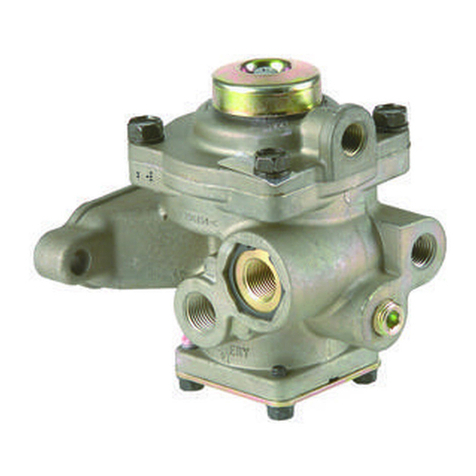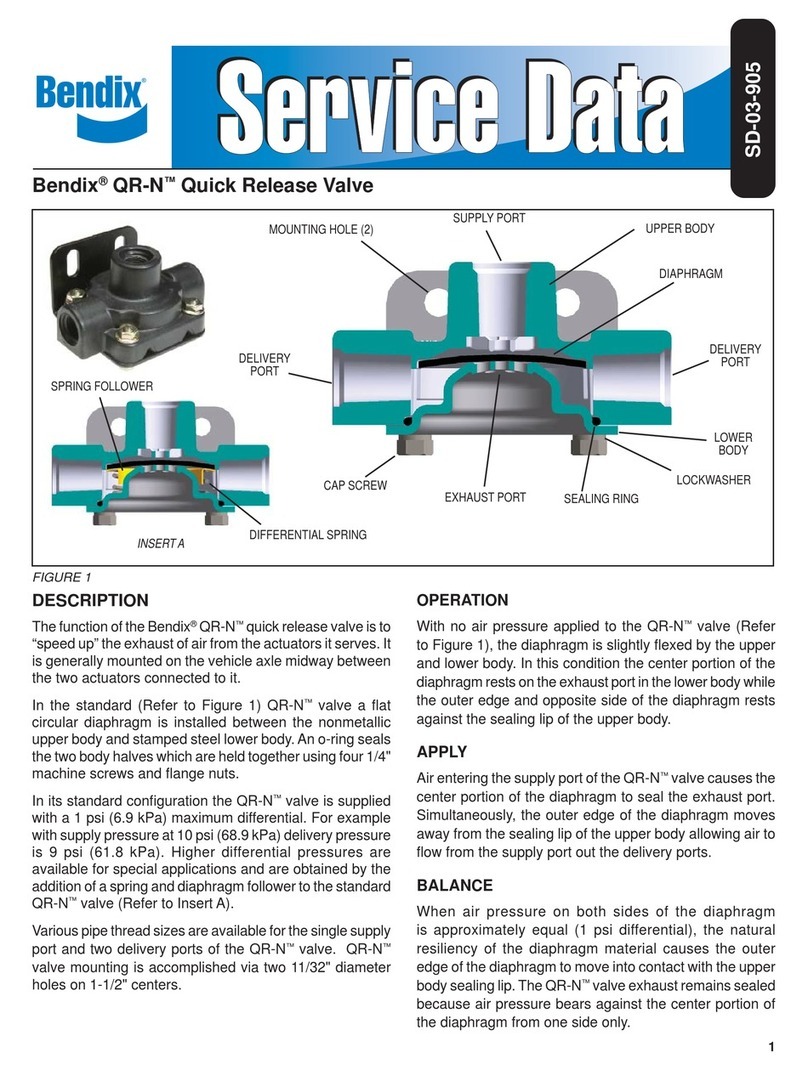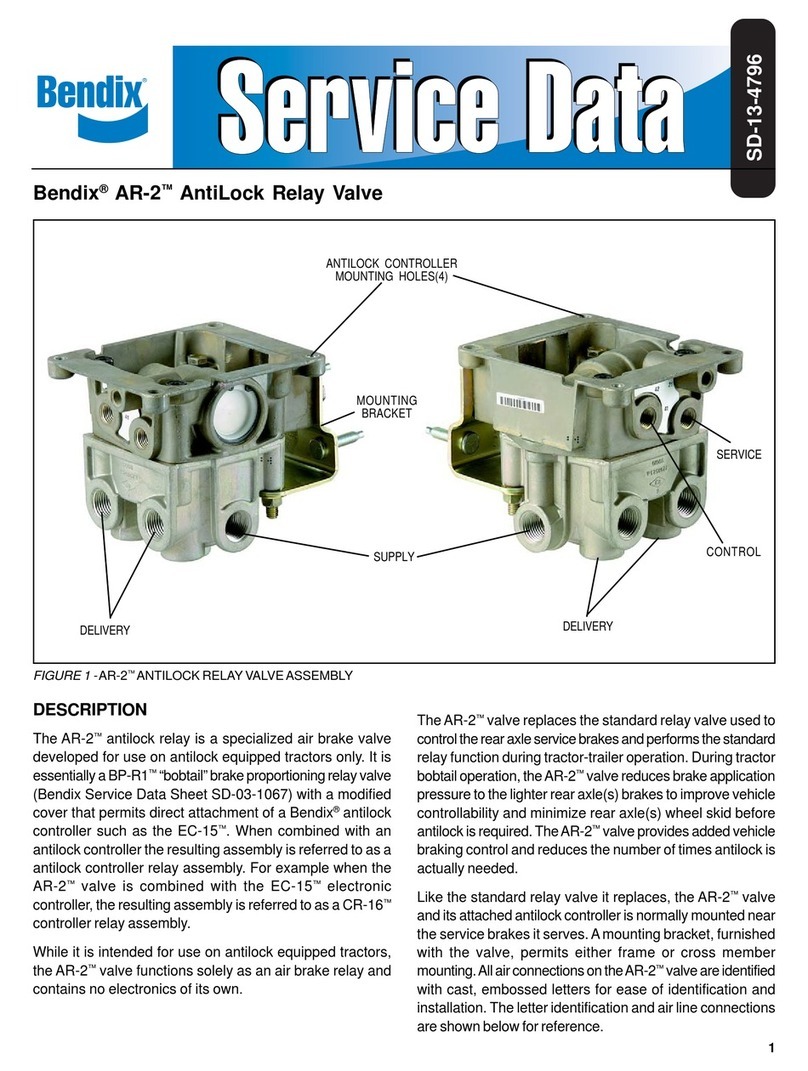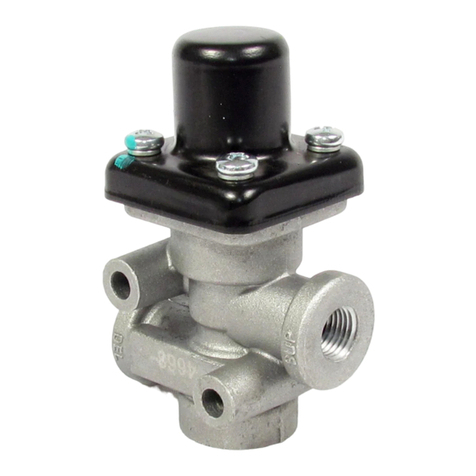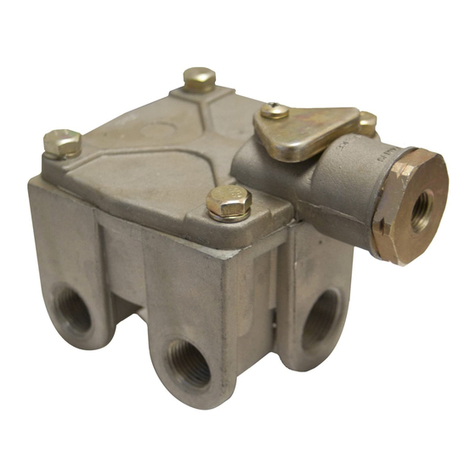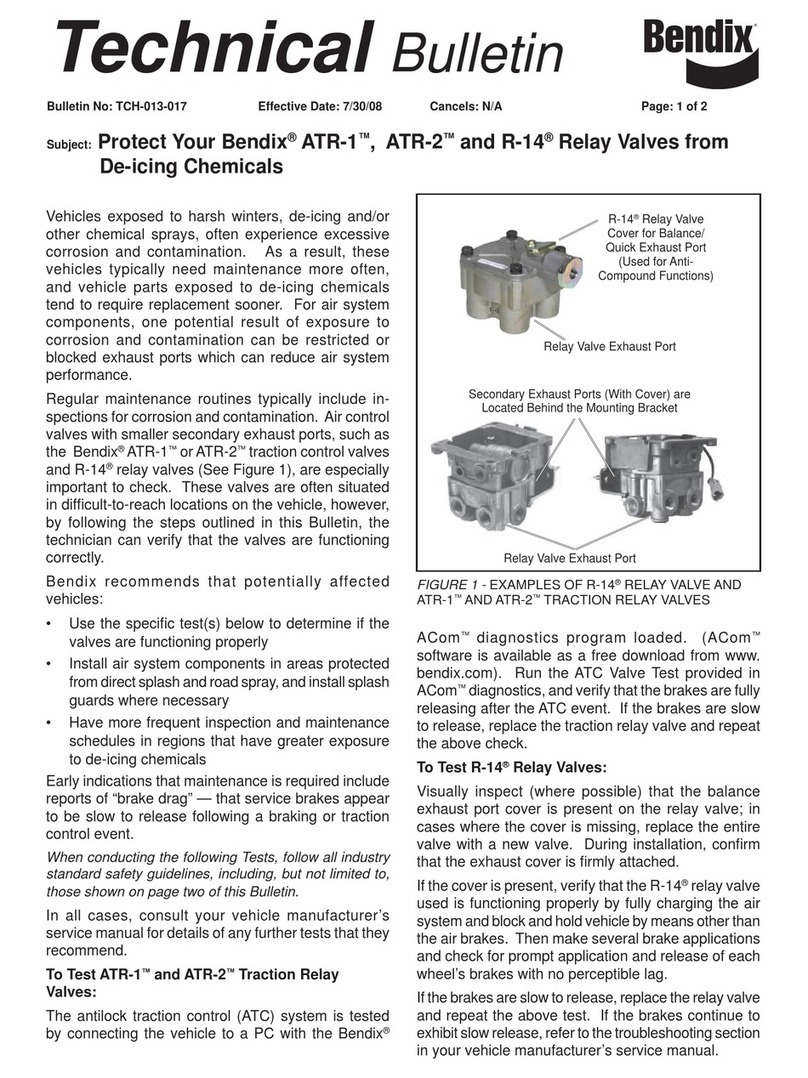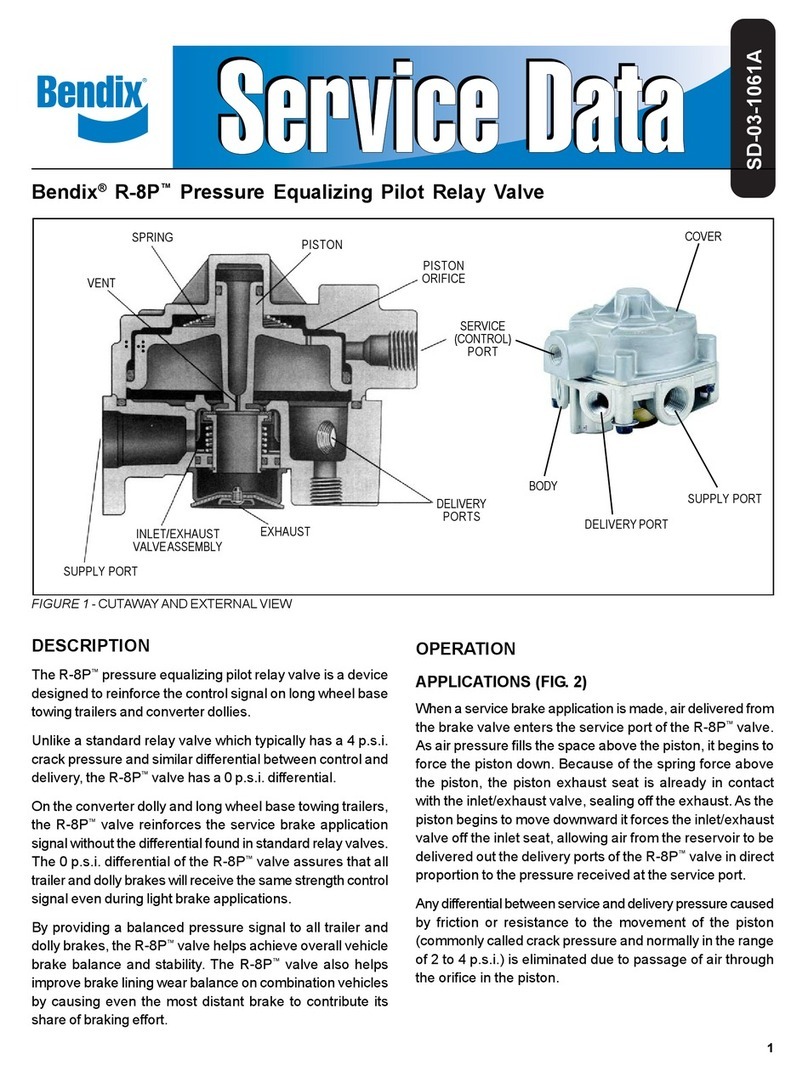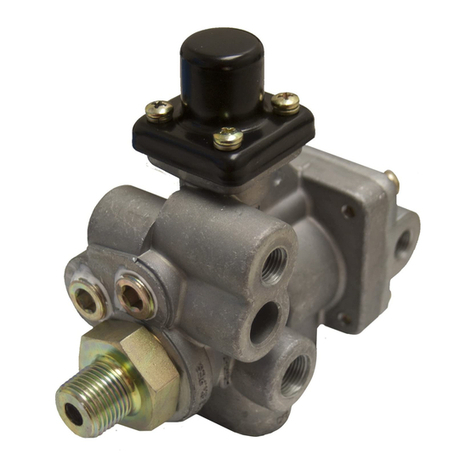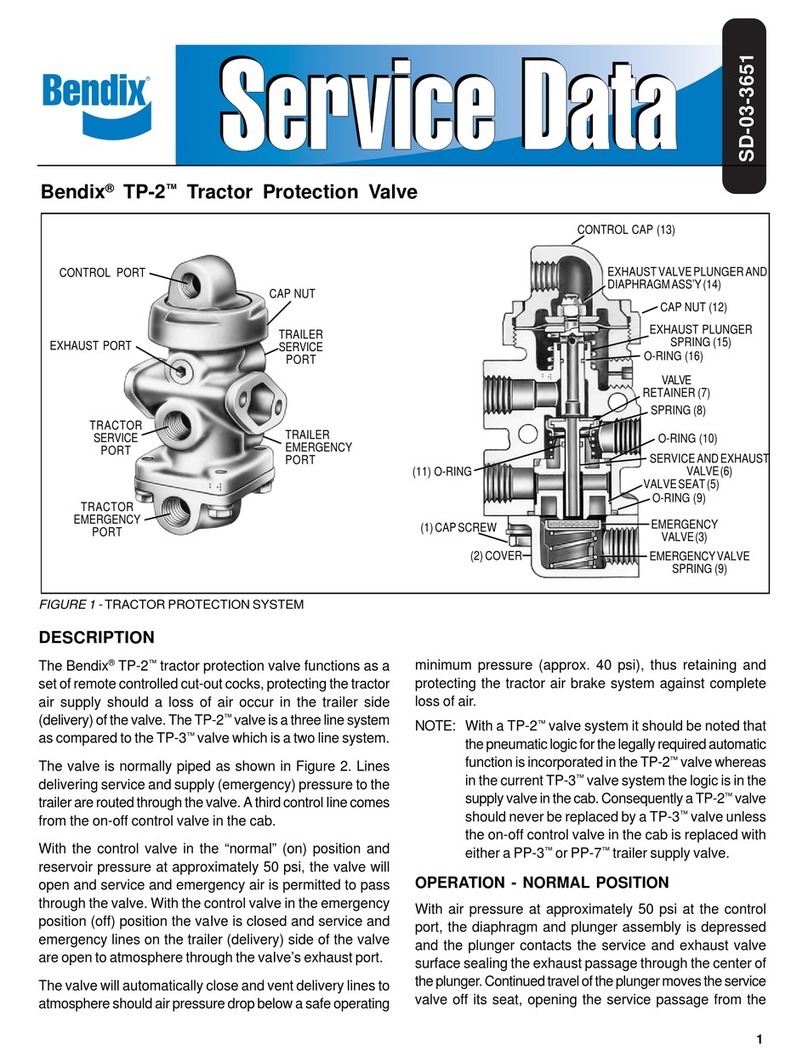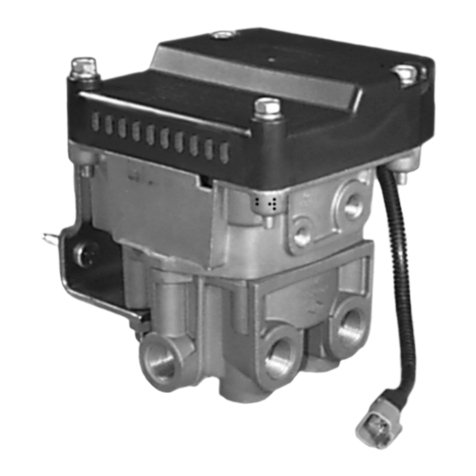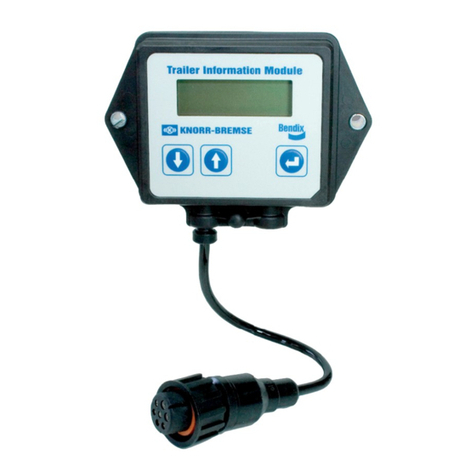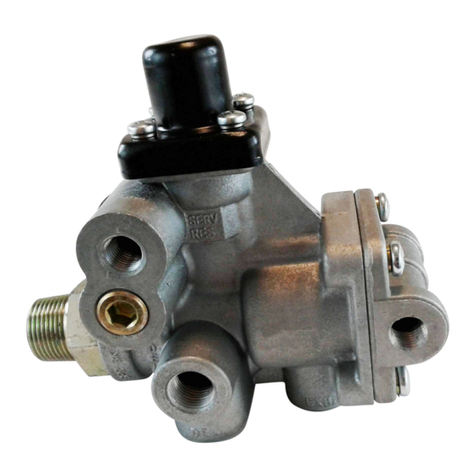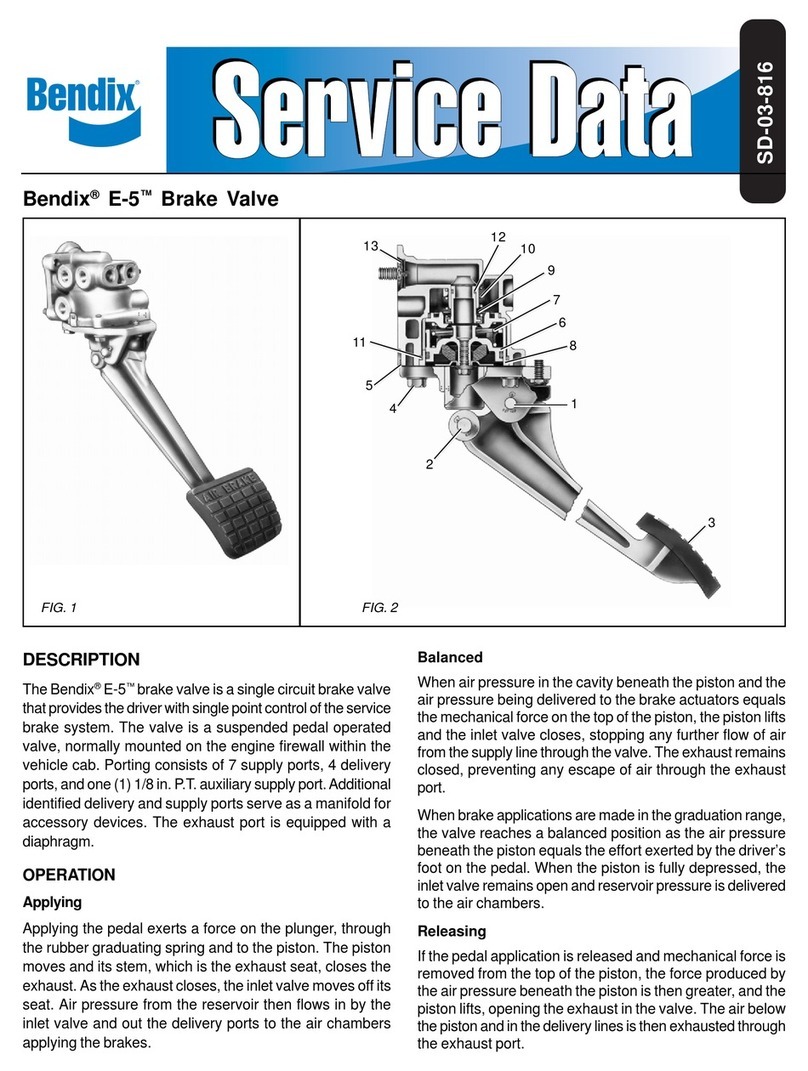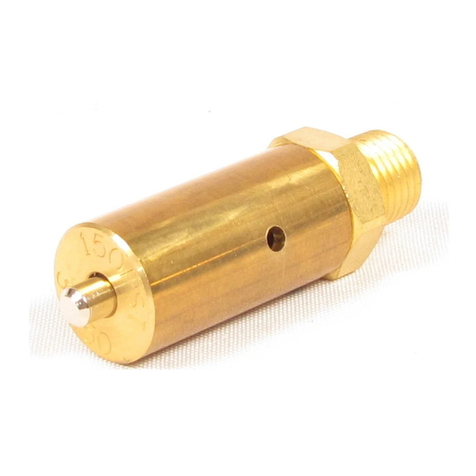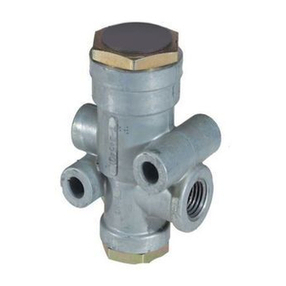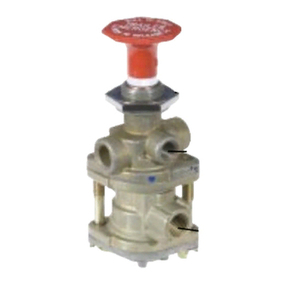
5
NOTE: When using pipe thread sealant during assembly
andinstallation,take particularcare toprevent the
sealant from entering the valve itself. Apply the
sealant beginning with the second thread back
from the end.
1. Install inlet valve (6). Install o-ring (5) on valve retainer
(14).Install spring(7) andvalve retainer. Installretainer
ring (13) making certain it is engaged in groove.
2. Install double check valve guides in intermediate body
and install shuttles (4) in guides.
3. Install spring (8) in body. Install o-rings (2) and (3)
on piston (12). Insert stem of piston inside of spring,
making sure vent is open.
4. Install new gaskets (9) and (10) on both sides
of intermediate body (Note: locating pins match
correspondingholesingasket).Install lowerand upper
bodies with assembly in the following manner.
A. Torque center two (2) cap screws to 80" lbs.
B. Torque upper right and lower left cap screws to
80" lbs.
C. Torque lower right and upper left cap screws to
80" lbs.
D. IMPORTANT - Repeat steps A, B, and C.
TESTING REBUILT TP-4™VALVE
Perform Operating and Leakage Tests, as outlined in
“Service Checks” section.
WARNING! PLEASE READ AND FOLLOW
THESEINSTRUCTIONSTOAVOIDPERSONAL
INJURY OR DEATH:
When working on or around a vehicle, the following
general precautions should be observed at all times.
1. Park the vehicle on a level surface, apply the
parking brakes, and always block the wheels.
Always wear safety glasses.
2. Stop the engine and remove ignition key when
working under or around the vehicle. When
working in the engine compartment, the engine
should be shut off and the ignition key should be
removed. Where circumstances require that the
engine bein operation,EXTREME CAUTIONshould
be used to prevent personal injury resulting from
contact with moving, rotating, leaking, heated or
electrically charged components.
3. Do not attempt to install, remove, disassemble
or assemble a component until you have read
and thoroughly understand the recommended
procedures. Use onlythe proper toolsand observe
all precautions pertaining to use of those tools.
4. If the work is being performed on the vehicle’s
air brake system, or any auxiliary pressurized air
systems, make certain to drain the air pressure
from all reservoirs before beginning ANY work
on the vehicle. If the vehicle is equipped with an
AD-IS®air dryersystem ora dryerreservoir module,
be sure to drain the purge reservoir.
5. Followingthevehiclemanufacturer’srecommended
procedures, deactivate the electrical system in a
manner that safely removes all electrical power
from the vehicle.
6. Never exceed manufacturer’s recommended
pressures.
7. Never connect or disconnect a hose or line
containing pressure; it may whip. Never remove
a component or plug unless you are certain all
system pressure has been depleted.
8. Use only genuine Bendix®replacement parts,
components and kits. Replacement hardware,
tubing, hose, fittings, etc. must be of equivalent
size, type and strength as original equipment and
be designed specifically for such applications and
systems.
9. Components with stripped threads or damaged
parts should be replaced rather than repaired. Do
not attempt repairs requiring machining or welding
unless specifically stated and approved by the
vehicle and component manufacturer.
10. Prior to returning the vehicle to service, make
certain all components and systems are restored
to their proper operating condition.
11. For vehicles with Antilock Traction Control (ATC),
the ATC function must be disabled (ATC indicator
lamp should beON) prior toperforming any vehicle
maintenance where one or more wheels on a drive
axle are lifted off the ground and moving.
